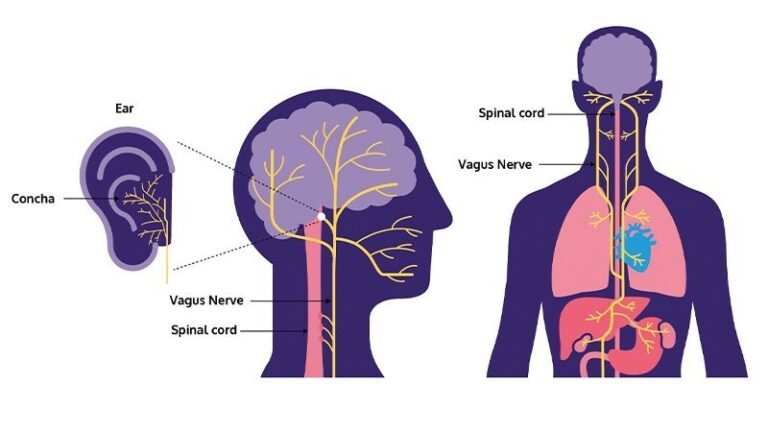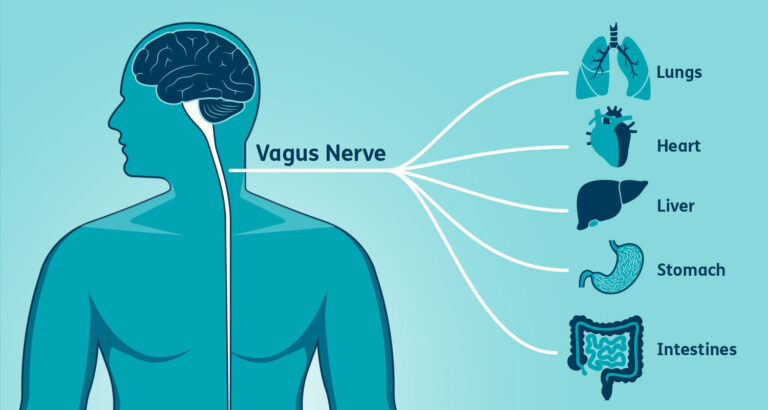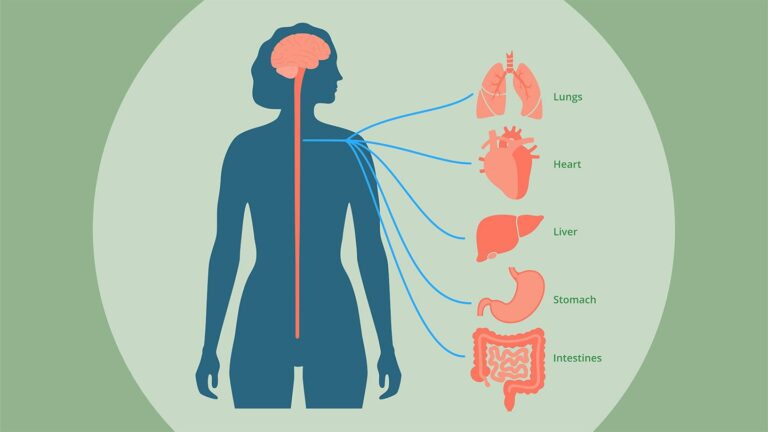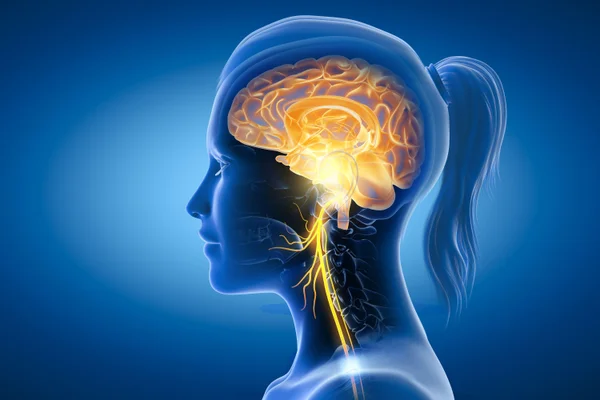Anatomy of the Vagus Nerve: A Comprehensive Overview
The vagus nerve, also known as the tenth cranial nerve or CN X, is one of the most important nerves in the human body, playing a crucial role in the autonomic nervous system. It is a complex nerve that originates in the brainstem and extends down through the neck and into the abdomen, branching off to various organs and tissues along the way. In this article, we will explore the anatomy of the vagus nerve in detail, discussing its structure, function, and clinical significance.
Anatomy of the Vagus Nerve
The vagus nerve is a paired nerve, meaning there is one on each side of the body. It is the longest and most complex of the cranial nerves, extending from the brainstem to the abdomen. The nerve is named after the Latin word for “wandering,” reflecting its extensive distribution throughout the body.
Origin: The vagus nerve originates in the medulla oblongata, which is part of the brainstem. It emerges from the lateral aspect of the medulla and travels through the skull via the jugular foramen.
Pathway: From the skull, the vagus nerve travels down through the neck, giving off branches to various structures such as the larynx, pharynx, and heart. It then continues into the thorax, where it innervates the lungs and heart. Finally, the nerve extends into the abdomen, where it branches off to organs such as the stomach and intestines.
Branches: The vagus nerve gives off several branches along its pathway, including the pharyngeal nerve, superior laryngeal nerve, and recurrent laryngeal nerve. These branches innervate the muscles of the throat and larynx, as well as the heart and lungs.
Function: The vagus nerve is primarily responsible for the parasympathetic nervous system, which is responsible for rest and digest functions. It helps regulate heart rate, digestion, and respiratory rate, among other things. The vagus nerve also plays a role in the body’s response to stress, helping to calm the body down after a stressful event.
Clinical Significance
The vagus nerve is involved in a variety of health conditions, and dysfunction of the nerve can lead to significant health problems. Some common conditions associated with vagus nerve dysfunction include:
Gastrointestinal Disorders: The vagus nerve plays a crucial role in regulating digestion, so dysfunction of the nerve can lead to conditions such as gastroparesis, in which the stomach takes too long to empty its contents.
Heart Disorders: The vagus nerve helps regulate heart rate, so dysfunction of the nerve can lead to abnormalities in heart rate, such as bradycardia (slow heart rate) or tachycardia (fast heart rate).
Epilepsy: The vagus nerve is sometimes used as a treatment for epilepsy. Vagus nerve stimulation (VNS) involves implanting a device that stimulates the vagus nerve, which can help reduce the frequency and severity of seizures in some people.
Depression: There is some evidence to suggest that vagus nerve stimulation may be helpful in treating depression. The exact mechanism is not well understood, but it is thought to involve the nerve’s role in regulating mood.
In conclusion, the vagus nerve is a vital part of the human nervous system, playing a crucial role in regulating many essential functions in the body. Dysfunction of the vagus nerve can lead to a variety of health problems, highlighting the importance of understanding its anatomy and function. Further research into the vagus nerve may lead to new treatments for a variety of health conditions.




